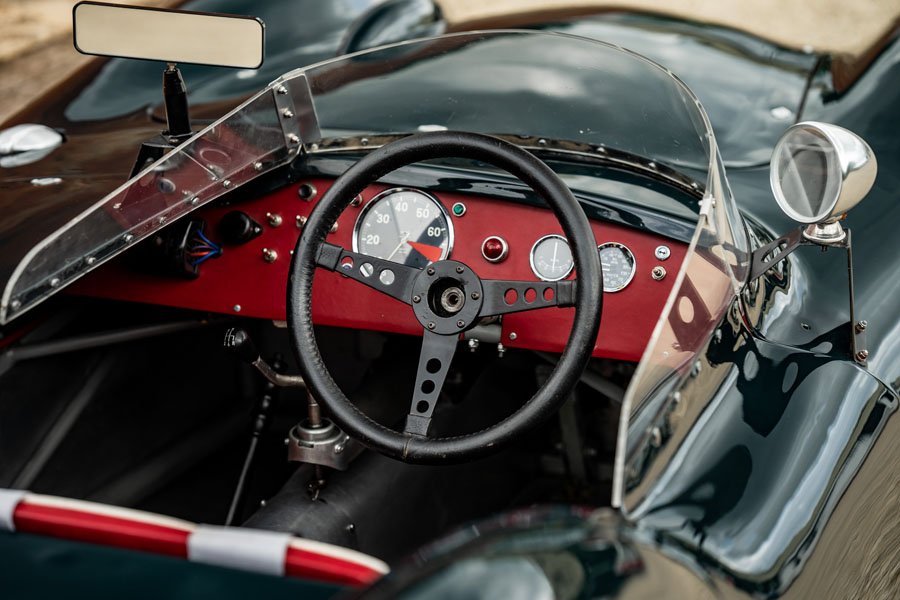One to Buy: ex-Peter Lumsden 1955 Lotus Mk9
/ Ben Tyer
Lotus introduced the Mk9 in March 1955 as more advanced version of the existing Mk8 complete with a smaller engine to contest the under 1100cc class.
With its stubby low-line body and dramatic stabilising fins, the Mk9 was one of the most distinctive cars around during the mid 1950s. Customers could opt for either a Coventry Climax engine (dubbed the Le Mans variant) or a less expensive iteration with a Ford sidevalve motor (the Club version).

Peak output ranged from 50bhp to 70bhp which endowed the Mk9 with a fantastic turn of speed given these cars typically weighed in at between 420kg and 457kg.
One of the most successful Mk9s that took to the track during this period was chassis 130 which is currently on offer at the Classic Motor Hub showroom in Ablington, Gloucestershire.

Having been used for a series of publicity photographs for the model ahead of the 1955 London Motor Show, it was sold to London-based stockbroker and privateer, Peter Lumsden.
Lumsden had an enormously successful 1956 season with chassis 130, during which he rarely finished outside of the podium positions. That season he also loaned the car to Lotus mechanic Graham Hill who went on to have quite the motor racing career.

Today chassis 130 is presented in superb condition throughout complete with its original engine.






























































